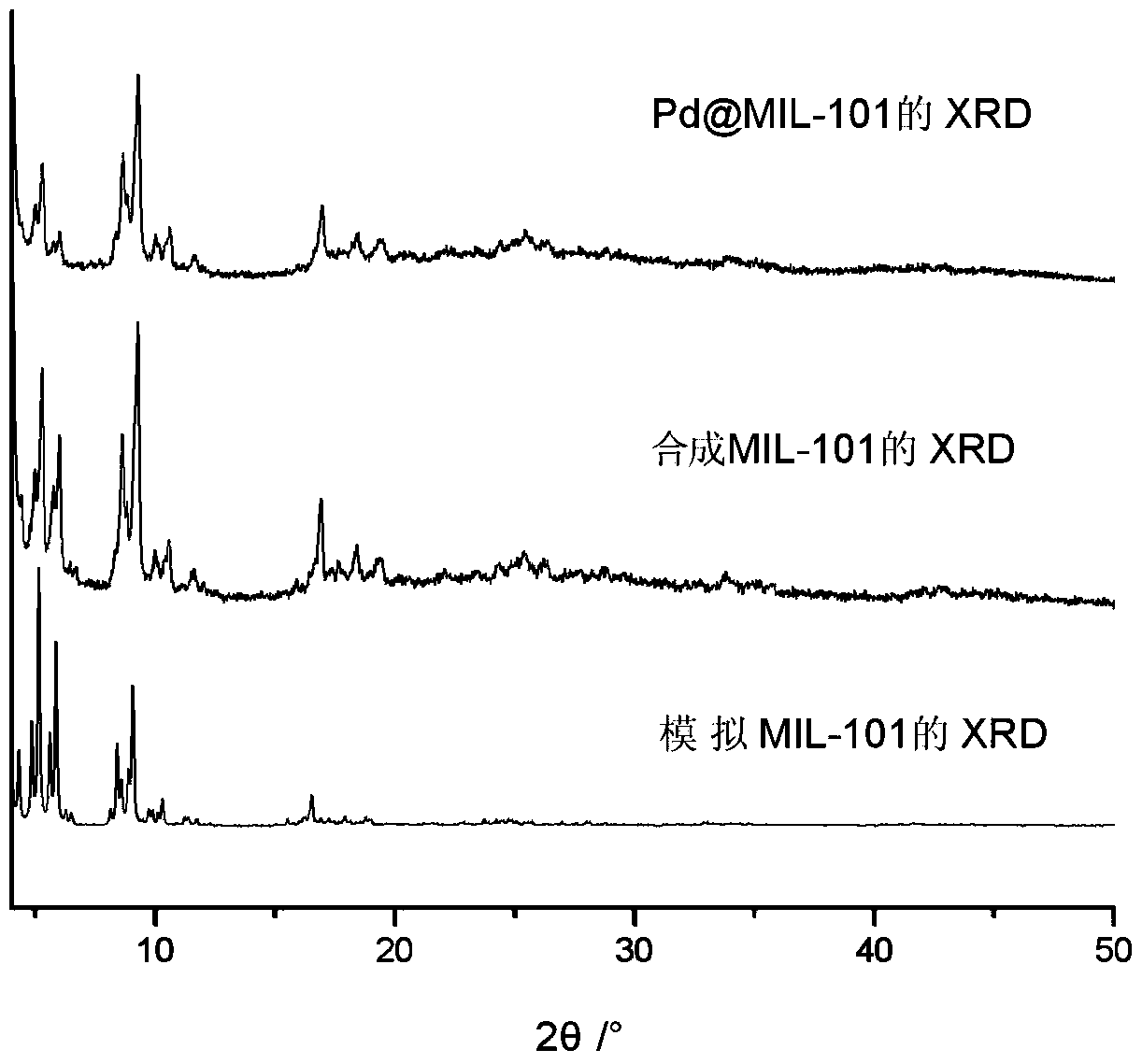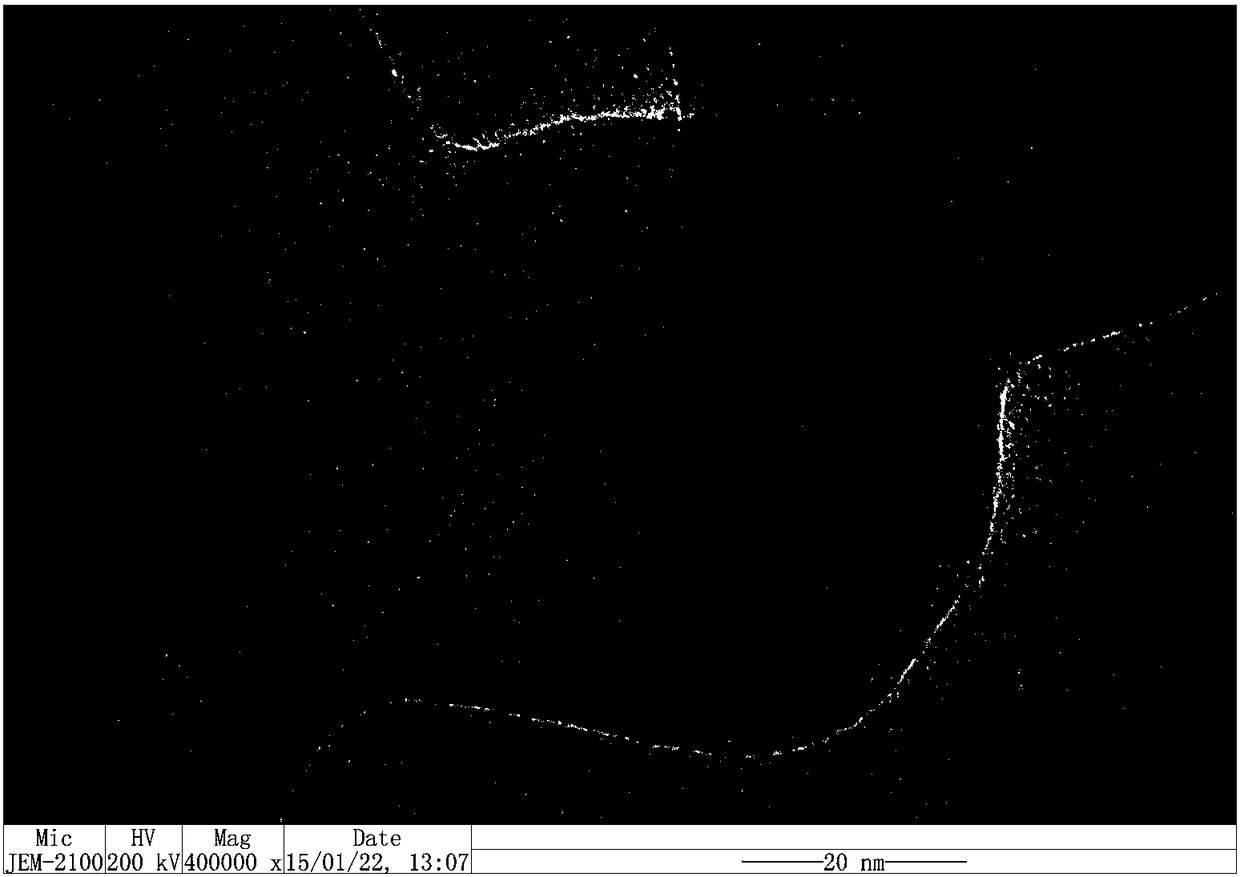A kind of pd@mil-101 composite material and its preparation method and application
A composite material and mixed liquid technology, applied in the preparation of halogenated hydrocarbons, chemical instruments and methods, hydrocarbons, etc., can solve the problems of difficult to protect catalysts, reflect selectivity, difficult to produce, etc., and achieve good reusability. , convenient purification and separation, the effect of improving yield
- Summary
- Abstract
- Description
- Claims
- Application Information
AI Technical Summary
Problems solved by technology
Method used
Image
Examples
Embodiment 1
[0021] Example 1 Pd@MIL-101 composite material
[0022] (1) Preparation method
[0023] 1. Preparation of MIL-101 crystals: Weigh 4g of chromium nitrate nonahydrate and 1.312g of terephthalic acid in a 100mL hydrothermal synthesis reactor, add 540mL of acetic acid (99.5%) and 50mL of sub-boiling distilled water at the same time, and use a stirring rotor to Sealed and stirred for 30 minutes, after stirring evenly, the rotor was taken out, and the hydrothermal synthesis reaction kettle was placed in an oven at 200°C for 8 hours of reaction. After the reaction, remove the liquid in the solution, wash the solid particles with 10 mL of water and 10 mL of ethanol three times each, put the washed solid into 50 mL of N,N'-dimethylformamide (DMF), and statically Place overnight, and obtain MIL-101 crystals after filtration.
[0024] 2. Activation of MIL-101 crystals: put the MIL-101 crystals into a vacuum drying oven at 150° C. for 12 hours in vacuum to obtain activated MIL-101 cryst...
Embodiment 2
[0030] Example 2 Selective Catalysis of Pd@MIL-101 Composite for the Reaction of Phenylboronic Acid and 1,4-Dibromobenzene
[0031] The method is as follows: Weigh 3mmol (0.1825g) of phenylboronic acid, 3mmol (0.4146g) of potassium carbonate and 1.5mmol (0.354g) of 1,4-dibromobenzene, and dissolve them in 10mL of methanol solution to obtain a mixed solution; Add 53mg of Pd@MIL-101 composite material (1.44mg Pd) and 1.44mg of pure palladium nanoparticles prepared in Example 1, respectively, and then place them in 10mL eggplant-shaped reaction bottles, install the reaction device, and first insert the long needle Stretch below the liquid surface, pass nitrogen gas for 10 minutes to remove the oxygen contained in the solution, then pull out the needle to make the whole reactor airtight, and finally insert a needle above the condenser tube for full nitrogen protection, and react at a temperature of 80°C. After 24h, get reaction solution respectively and carry out gas chromatograph...
Embodiment 3
[0036] Example 3 Repeatability test of Pd@MIL-101 composite material
[0037] After the reaction in Example 2 was completed, the Pd@MIL-101 composite material was isolated, and the experiment in Example 2 was repeated 4 times. Through repeated experiments, the yield of the Pd@MIL-101 composite for the first four times of the reaction did not change much, with good catalytic activity and selectivity, and the yield of 4-bromobiphenyl for the fifth time was 50.33%. The yield of benzene was 13.26%. It proves that the Pd@MIL-101 composite material synthesized by the present invention has good reusability, is easy to separate from reactants, and does not interfere with the entire reaction system.
PUM
 Login to View More
Login to View More Abstract
Description
Claims
Application Information
 Login to View More
Login to View More - R&D
- Intellectual Property
- Life Sciences
- Materials
- Tech Scout
- Unparalleled Data Quality
- Higher Quality Content
- 60% Fewer Hallucinations
Browse by: Latest US Patents, China's latest patents, Technical Efficacy Thesaurus, Application Domain, Technology Topic, Popular Technical Reports.
© 2025 PatSnap. All rights reserved.Legal|Privacy policy|Modern Slavery Act Transparency Statement|Sitemap|About US| Contact US: help@patsnap.com



